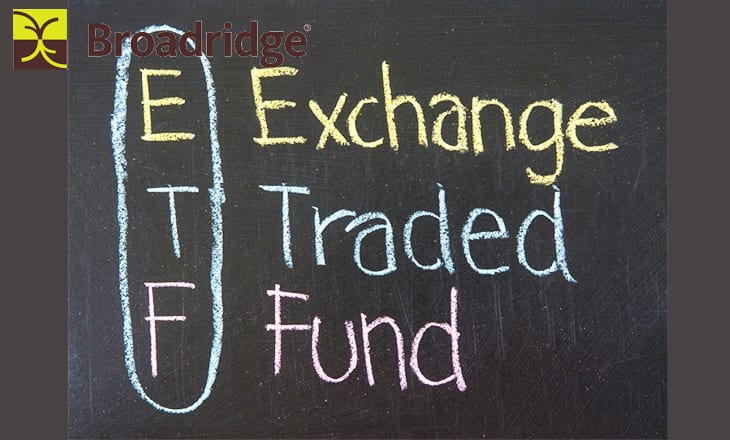Financial technology provider Broadridge Financial Solutions, Inc. (NYSE:BR) has just announced that the usage of passive investment products, ETFs and index funds, hits all-time highs in 2016, driven by third-party distribution channel sales from broker-dealers (B/D), registered investment advisors (RIAs) and banks. These channels represent almost $10.5 trillion in long-term funds and ETFs tracked by Broadridge via its Fund Distribution Intelligence.
For 2016, more than $610 billion, or 85% of the $724 billion of net new asset flows through third-party channels went into index funds or passive ETFs. Advisor driven channels – independent broker-dealers, wirehouse firms, RIAs and discount brokerage firms – saw almost 82% of net new assets flow into passive funds and ETFs. Institutional third-party channels – banks, private banks and trust departments – had 90% of net new flows into passive products.

Frank Polefrone
Frank Polefrone, senior vice president of Broadridge’s data and analytics business, commented:
The move to lower fee products by fee based advisors and banks continues to drive the growth of passive products, with index funds representing 28% of net new flows and passive ETFs 57% of new flows. This shift is impacting both distributors and fund manufacturers, resulting in changes to distributor’s product menus, development of new ‘clean share classes’ by active fund managers, and a broader use of ETFs for advisor managed portfolios.” Mr. Polefrone continued, “Fund firms with a wide selection of both active and passive products will continue to have success. Active managers with unique products will also stand out and continue attracting assets.
Passive Dominates 2016 Net New Assets in Third-Party Channels
Third-party channels now have a higher percentage of passive products than passive products across all funds. They have 36.3% of assets in passive products, up from 32.6% just a year ago. This is compared to overall fund assets (excluding money market funds), which shows 30% in passive products. The increase of passive products for third-party channels is driven to a large degree by advisor’s adoption of ETFs as a primary investment vehicle for client portfolios, and the use of ETFs for robo-advisors. In the last 5 years, passive products distributed by third-party channels has grown from a little over a quarter in 2012 (26.9%) to over a third in 2016 (36.3%).
For 2016, overall net new assets for ETFs increased by $405 billion, or 18.4 percent to $2.6 trillion. The largest increase for 2016 occurred in the RIA channel, with net new assets of $116 billion, up 20%. Net new assets for mutual funds were also up in the RIA market, with net new fund assets of $41 billion, or 2.6% for total fund assets of $1.64 trillion. The RIA channel is the largest retail channel with combined fund and ETF assets of $2.33 trillion. The independent broker dealer (IBD) channel is slightly behind with $2.29 trillion, but with fewer assets in ETFs ($514 billion) and more in funds ($1.78 trillion).
Additional key findings include:
- Net new long-term fund assets YTD ending December 2016 was up $319 billion, or 4.4%.
- Passive products for retail channels – RIA, IBD, wirehouse and discount B/D – were up by $403 billion in the third quarter (+24%), while net new assets for passive products for the institutional channels – private bank, bank and trust – increase by $208 billion (+15%).
Net new assets for retail long-term active funds were up by $89 billion (+2%), while institutional long-term active fund net flows increased by $24 billion (+1.3%).
